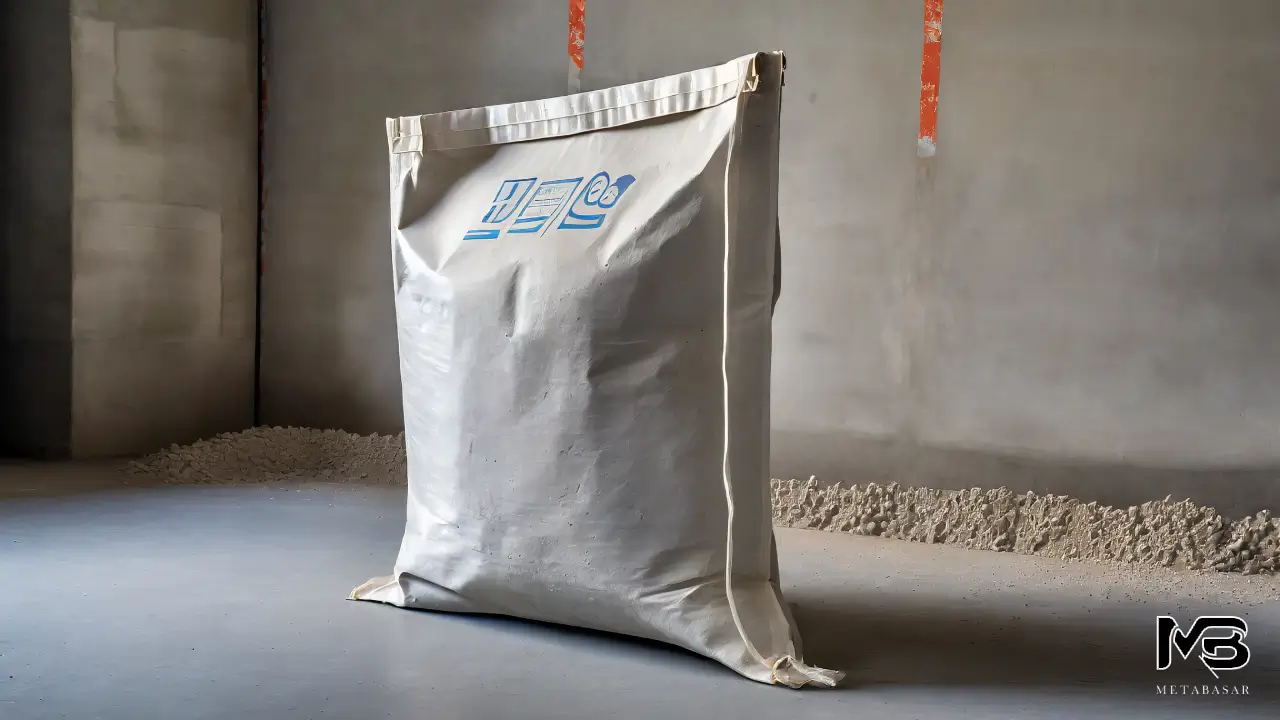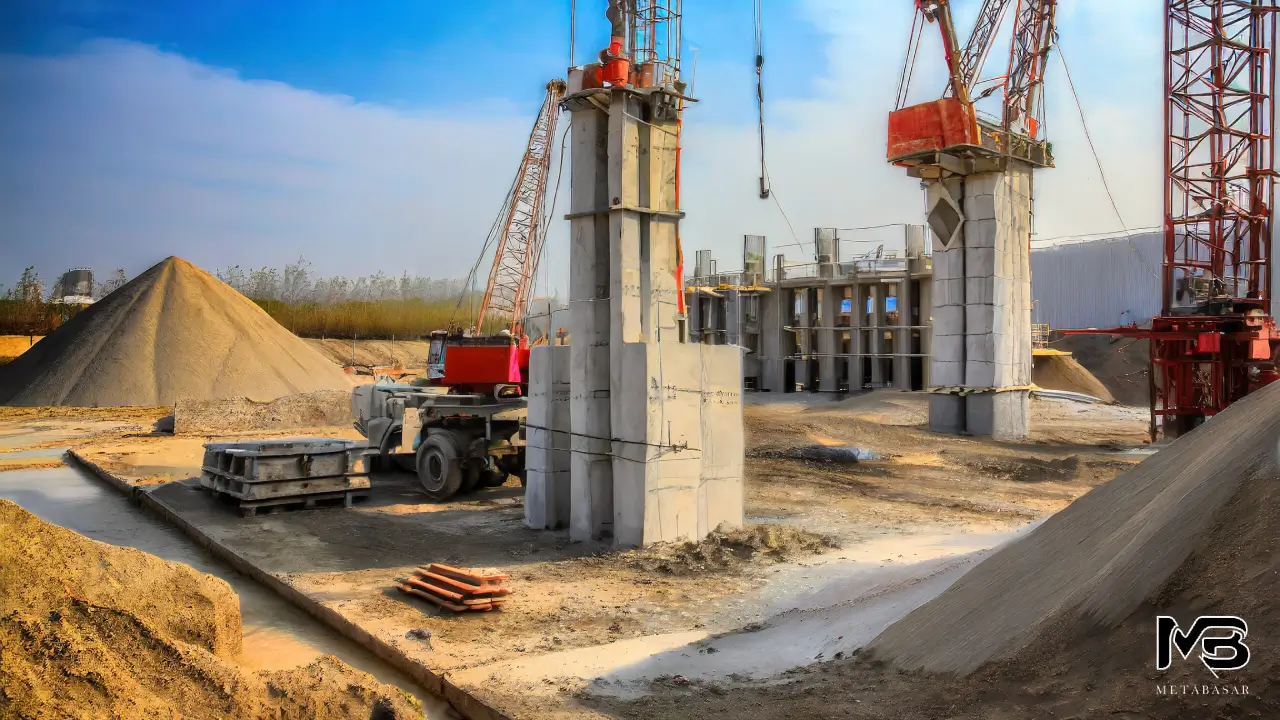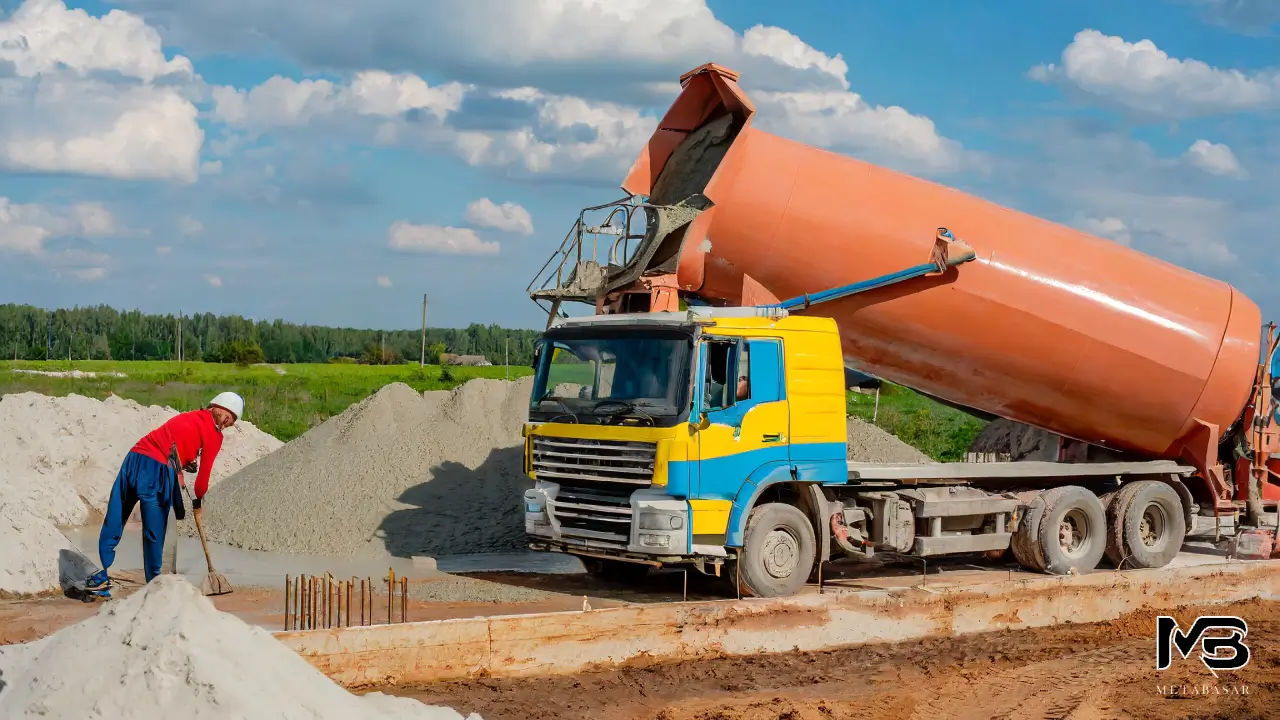
Cement Made Easy : Expert Techniques for Building Success
One of the most crucial building blocks of any construction project is cement, a versatile and durable material that acts as a hydraulic binder, meaning it hardens when water is added and acts as a glue to bind fine sand and coarse aggregates together in concrete.
Cement plays a vital role in the construction industry. However, with so many different types of cement available, it can be challenging to know which one to choose for your specific needs. In this blog, we will take you through everything you need to know about cement- its history, chemistry, and types.
We will also cover the process of setting and hardening cement, safety concerns while working with it, and its impact on the environment. Additionally, we will explore alternative fuels and by-products in cement production that contribute to a sustainable future.
Cement mixed with water, sand, and gravel forms concrete, which is what the vast majority of cement is used for. Read on as we make cement, glue, and hydraulic binder easy for you!
Table of Content
- 1 Understanding Cement Chemistry
- 2 A Walk Through Cement History
- 3 All About Modern Cements
- 4 The Process of Cement Setting, Hardening and Curing
- 5 Addressing Safety Concerns in the Cement Industry
- 6 The Impact of Cement Industry on the Environment
- 7 The Path Towards Reduced-footprint Cement
- 8 Cement’s Role in Clean Energy Transitions
- 9 Frequently Asked Questions
- 10 Conclusion
Understanding Cement Chemistry
Cement chemistry involves the intricate interaction of calcium, silica, alumina, and iron oxide. Understanding this chemistry is crucial for optimizing cement performance as it plays a vital role in the setting and hardening of concrete. Moreover, the hydration process is essential for strength development, making cement chemistry a cornerstone of durable material and binder.

Exploring the Types of Cement : Hydraulic and Non-hydraulic
Hydraulic cements, such as Portland cement, set and harden through hydration, involving the chemical reaction with water. On the other hand, non-hydraulic cements, like lime plaster, cure by a different chemical process, requiring carbon dioxide from the air for curing.
The primary components of hydraulic cement are calcium and gypsum, while non-hydraulic cement relies on carbonation for hardening. Understanding these distinctions is crucial for choosing the right building material for construction.
A Walk Through Cement History
Cement’s historical significance dates back to ancient civilizations, with its production tracing back to the 19th century. Over time, the industry has seen significant evolution, from the pioneering work of Joseph Aspdin to modern formulations.
Cement industry pioneers, including Frenchman Louis Vicat and Isaac Charles Johnson, have played a vital role in its development, propelling it from Roman cement to today’s advanced compositions. Germany, among other developed capitalist countries like the USA, France, Italy, Russia, and Russia, is one of the leading producers of cement, with a total capacity of 3585 Mt in 2011 and 3736 Mt in 2012.
The Ancient Era: Greece, Rome, and Mesoamerica
During the ancient era, the Greeks, Romans, and Mesoamericans demonstrated early cement utilization by incorporating hydraulic cement in their construction. The remarkable durability and strength of ancient cement, such as Roman cement, were notable.
Romans specifically utilized pozzolan, volcanic ash, as a crucial component in cement production. Cement’s use in ancient Greece, Rome, and Mesoamerica, including the use of powdered brick or pottery as a substitute, laid the groundwork for modern cement production techniques and set the stage for future industry advancements.
Cement Evolution: From Middle Ages to the 20th Century
During the Middle Ages, significant advancements in cement production techniques emerged. The introduction of hydraulic lime marked a pivotal moment, laying the groundwork for subsequent innovations.
The 19th and 20th centuries saw cement production become a widespread industry, with revolutionary technologies like rotary kilns shaping modern manufacturing processes. This evolution from the Middle Ages to the 20th century set the stage for the efficient and widespread production of durable building materials, contributing significantly to the growth of the cement industry.

All About Modern Cements
Modern cements offer diverse materials tailored for specific applications, with ordinary Portland cement (OPC) notably revolutionizing construction. Portland pozzolan cement provides enhanced durability and reduced environmental impact as an alternative to OPC, while specialized types like Portland slag cement meet specific construction requirements, including grout.
The production of modern cements involves carefully blending raw materials to achieve desired properties, showcasing the industry’s continuous innovation and commitment to performance.
An Insight into Portland Cement and its Blend
Invented by Joseph Aspdin, Portland cement has become pivotal in modern construction, widely used as a binder in mortar and concrete. Its blend of clinker, gypsum, and additives bestows unique properties, while specifications have evolved to meet industry standards.
Blended cements, like those incorporating blast furnace slag or fly ash, further enhance Portland cement’s performance, offering durability and environmental benefits. Egor Cheliev, a Russian innovator, also made significant contributions to the field of cement and concrete in the 19th century.
Exploring Other Types of Cements
Specialized cements, like oil well cement used in drilling, demand exceptional strength, while masonry cement offers excellent workability and bond strength for masonry applications. High-early-strength cement is ideal for time-sensitive projects, delivering rapid strength development. This diverse range of cement types highlights the industry’s versatility in meeting various construction demands.
The Process of Cement Setting, Hardening and Curing
The transformation of a plastic mixture into a durable material is the essence of cement setting. Hydration, a chemical reaction with water, is crucial for cement hardening and strength development. Optimal durability and structural integrity are achieved through proper curing.
The water-to-cement ratio, fine aggregate, and mixer all influence the setting and hardening processes. Understanding these intricacies, including the size of the coarse aggregate which can be up to 150 mm (6 inches) when concrete is placed in large masses such as dams, is fundamental for successful construction projects.
Steps Involved in the Cement Manufacturing Process
The cement production initiates with the extraction of raw materials like limestone, clay, and chalk from quarries. These materials undergo crushing, blending, and grinding to form a powder known as raw meal. The next step involves heating the raw meal in a rotary kiln to produce clinker, a crucial component in cement.
After cooling, the clinker is finely ground into a fine powder and combined with gypsum and chalk to create cement. This manufacturing process integrates precise chemical and physical processes, resulting in a durable building material.
Addressing Safety Concerns in the Cement Industry
Cement production facilities prioritize the well-being of workers by implementing strict safety measures and protocols. Adequate safety training and access to proper equipment are crucial for ensuring the welfare of cement industry workers and preventing accidents and hazards. The industry adheres to comprehensive safety regulations, focusing on occupational health and safety standards to maintain a secure working environment.

Common Safety Measures in Cement Production
In cement production, safety systems are employed to prevent accidents and ensure worker protection. Regular safety audits and emergency response training are integral safety measures in cement plants. Adhering to safety protocols and guidelines, cement production facilities enforce rigorous safety practices to prioritize worker well-being. This aligns with the industry’s commitment to maintaining occupational health and safety standards, essential for a secure working environment.
The Impact of Cement Industry on the Environment
The cement industry’s environmental impact involves CO2 emissions, raising global environmental concerns. Additionally, heavy metal emissions from cement production contribute to environmental effects. Addressing these effects, environmental impact assessments are conducted to mitigate the industry’s carbon footprint. These assessments aim to understand and reduce the environmental implications of cement production.
The Role of Cement in CO2 Emissions and Absorption
The global impact of cement production on CO2 emissions is significant, prompting efforts to reduce its environmental footprint. Solutions such as carbon capture and storage are being explored to mitigate the industry’s CO2 emissions. The focus on cement’s carbon footprint has spurred innovations aimed at minimizing its environmental impact. This ongoing initiative underscores the industry’s commitment to addressing the environmental concerns associated with cement production.
Understanding Heavy Metal Emissions in Cement Manufacturing
Heavy metal emissions in cement production present environmental hazards, requiring stringent control measures and environmental monitoring. Cement producers implement mitigation strategies to address heavy metal emissions, aiming to limit their impact on the environment. Efforts are focused on reducing heavy metal emissions and ensuring sustainable practices.
This involves utilizing alternative materials and fuels to minimize heavy metal emissions and promote eco-friendly cement production. Environmental regulations and innovations play a vital role in addressing heavy metal emissions in cement manufacturing.
The Path Towards Reduced-footprint Cement
Exploring sustainable practices, cement producers innovate with alternative fuels and by-products to minimize environmental impact. Focusing on reducing its carbon footprint, the cement industry aims to develop environmentally friendly products, targeting lower emissions and sustainable production.
Embracing low-carbon innovations, the industry seeks to create durable and eco-friendly cement, incorporating sustainable practices for a reduced environmental footprint and using 80-90% less energy. Countries like France, the Netherlands, Sweden, Germany, the United Kingdom, and the United States, including France, have been identified as frontrunners in the adoption of regulation on low carbon concrete and construction, and implementation of supporting public procurement schemes in October 2022.
The Use of Alternative Fuels and By-products Materials in Cement Production
Incorporating alternative fuels and by-products into cement production offers sustainable solutions, reducing the industry’s environmental impact. This integration promotes sustainability and contributes to a reduced environmental footprint, aligning with the industry’s goal of minimizing its ecological influence.
By implementing alternative fuels and by-products, cement producers worldwide are actively working towards lessening their reliance on fossil fuels and decreasing CO2 emissions through co-processing. This shift towards sustainability is a global initiative, with countries like China, India, the United States, and European Union leading the way.
Cement’s Role in Clean Energy Transitions
Supporting sustainable development, the cement industry contributes to clean energy transitions through innovation and technology, promoting environmental stewardship. Reflecting environmental responsibility, it aligns with clean energy transitions for sustainable future development.
This engagement showcases the industry’s commitment to environmental sustainability and its readiness to adopt greener practices. By embracing clean energy transitions, cement producers worldwide are demonstrating their dedication to reducing the carbon footprint and fostering a more sustainable future.
How Can Cement Contribute to a Sustainable Future?
Cement’s contribution to a sustainable future lies in its integration with renewable energy, supporting environmental conservation efforts. The industry’s sustainability initiatives drive a greener and more responsible future, aligning with global sustainability goals. Cement plays a crucial role in building a sustainable future through environmental stewardship and responsible practices.
Frequently Asked Questions
What are some common mistakes to avoid when working with cement?
To ensure safe and effective cement work, avoid these common mistakes: neglecting proper protective gear like gloves and a dust mask, adding excess water that weakens the mixture, not adequately preparing the surface, and failing to allow sufficient time for curing before applying weight or pressure.
What are the different types of cement and their uses?
Different types of cement serve various construction purposes. Portland cement, commonly used for general construction, is versatile. White cement is ideal for decorative finishes and sculptures. Rapid hardening cement sets quickly and is suitable for repairs and pre-fabricated concrete.
How can I properly mix cement for my project?
To properly mix cement for your project, it’s crucial to measure the cement, sand, and water accurately for the right consistency. Use a clean mixing container and thoroughly mix the dry ingredients before gradually adding water. Mix until you achieve a smooth, even texture.
Conclusion
In conclusion, cement has played a crucial role in the development of civilizations throughout history. From ancient Greece and Rome to the modern era, cement has evolved and adapted to meet the changing needs of society. However, it is important to acknowledge the environmental impact of the cement industry.
The production of cement contributes to CO2 emissions and heavy metal emissions, which have detrimental effects on our environment. To mitigate these effects, the industry is exploring alternative fuels and by-product materials, as well as embracing clean energy transitions. By adopting sustainable practices, the cement industry can contribute to a more environmentally friendly future. Let’s work together to build a successful and sustainable world.
